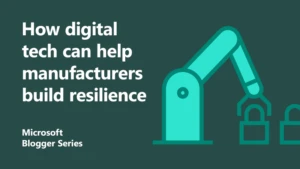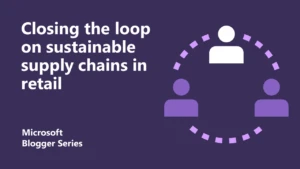
Major manufacturers already winning big with industrial IoT on Azure
Earlier this year we published a report—Manufacturing Reimagined—which laid out seven ways manufacturing companies can take advantage of emerging digital technology. One of these was the internet of things (IoT), which promises 14 billion connected devices by 2022, along with a $913 billion opportunity for the sector. It also emerged that companies have already increased revenue by over 16 percent in areas where they have embraced the technologies driving this digital transformation.
What technologies? We’re talking, in large part, about networks of “smart devices” that collect data from the real world. Organisations can then interpret this data to derive insight from the physical environment and act accordingly. Sounds vague? Here are some real-life examples of IoT in action.
The Rolls-Royce of IoT
Rolls-Royce is a name synonymous with excellence, and its aeroplane engines power more than 50,000 flights a month. It uses our Azure IoT Suite and Cortana Intelligence Suite to quickly diagnose engine problems, so its mechanics are better equipped to fix them. It estimates that small efficiencies like this will save one per cent in fuel costs per flight, working out at $250,000 per aircraft per year. No wonder it’s already got Singapore Airlines on board as an early customer for the initiative.
Jeep on truckin’
KUKA Systems Group is famous for having designed the first industrial robot. It wanted an automated process that could produce eight different Jeep Wrangler bodies on the same production line without interrupting production flow, and saw IoT as a way of achieving it. KUKA connected over 60,000 devices such as welders, sealers, and robots to its applications and back-end systems to form a production line that’s not stopped once for over 8 years, producing a car body every 77 seconds.
Going up!
ThyssenKrupp Elevator maintains more than 1.1 million lifts worldwide. That’s a lot of lifts to keep an eye on, so it fits them with sensors that are connected to the cloud. The data from the sensors can then be viewed by maintenance employees on their PCs or mobiles to see where lifts are likely to develop faults and proactively be assigned to perform preventative maintenance. ThyssenKrupp says that this real-time view of its lifts and maintenance organisation has improved reliability and reduced costs.

One of the key parts of the story for the companies described above is the use of the cloud. The limitless scale and unprecedented agility of the cloud have allowed organisations of all shapes and sizes to handle huge volumes of data. This is perfect for IoT applications, where devices could be sending back billions of data points a second.
Making Azure a better place to build your IoT
Simply put, Microsoft wants to make it easier for organisations to do more with IoT on our Azure cloud platform, and manufacturing is no exception.
Earlier this year, we announced that we are working with the OPC Foundation to ensure that the millions of devices and applications that are already compatible with the OPC UA standard are also compatible with Windows devices and the Azure cloud. This open standard enables virtually any industrial IoT scenario, including those built with decades-old equipment, to be developed on our platforms.
Similarly, we’ve worked with General Electric (GE) to give our customers access to its industry-leading Predix platform on Azure. This will make it easier for Predix users to integrate their data into their Azure applications like Office 365 and Power BI, as well as offering them a host of advanced functionalities on Azure, such as natural language technology (Conversation as a Platform), artificial intelligence, advanced data visualization, and enterprise application integration.
With our continued commitment to working with leading partners in the industrial internet of things, we hope that companies like KUKA, ThyssenKrupp, and Rolls-Royce will be able to make even better use of the data from their IoT infrastructures to gain greater actionable insight. But more importantly, we want you to be able to do the same at whatever scale you need.
Start your journey to the cloud with a free Azure trial
If you’re already using Azure, learn how to evolve your cloud initiatives




